The Daily Agenda: Breaking down the cost of poverty
UA students surveyed 272 people living in poverty … Their research helped identify trends and hopefully inform solutions … New rules for UA finances.
Tucson saw record high temperatures this summer, resulting in higher utility bills for just about all of us.
But for many people living in poverty, paying more for electricity isn’t an option, leaving them with little recourse during those scorching summer months. People resorted to staying late at work, cooking meals only at night, lining their windows in foil and putting wet towels over their children’s heads.
Even with these drastic measures, it was just too hot to live comfortably in their homes for one-third of the nearly 300 people surveyed through the University of Arizona’s 2023 Poverty in Tucson Field Workshop.
The workshop was created by Brian Mayer, an associate professor in the UA School of Sociology. Now in its seventh year, the workshop gives undergraduate students real-world experience in researching social issues, as they lead a scientific inquiry into poverty-related problems.
For the past three years, students have focused their research on housing and evictions, interviewing families who recently received assistance through the City of Tucson and Pima County’s Emergency Rental Assistance Programs.
Yesterday, students presented their findings at a community forum for residents, activists and policymakers interested in learning about the scope of the problem and potential solutions.
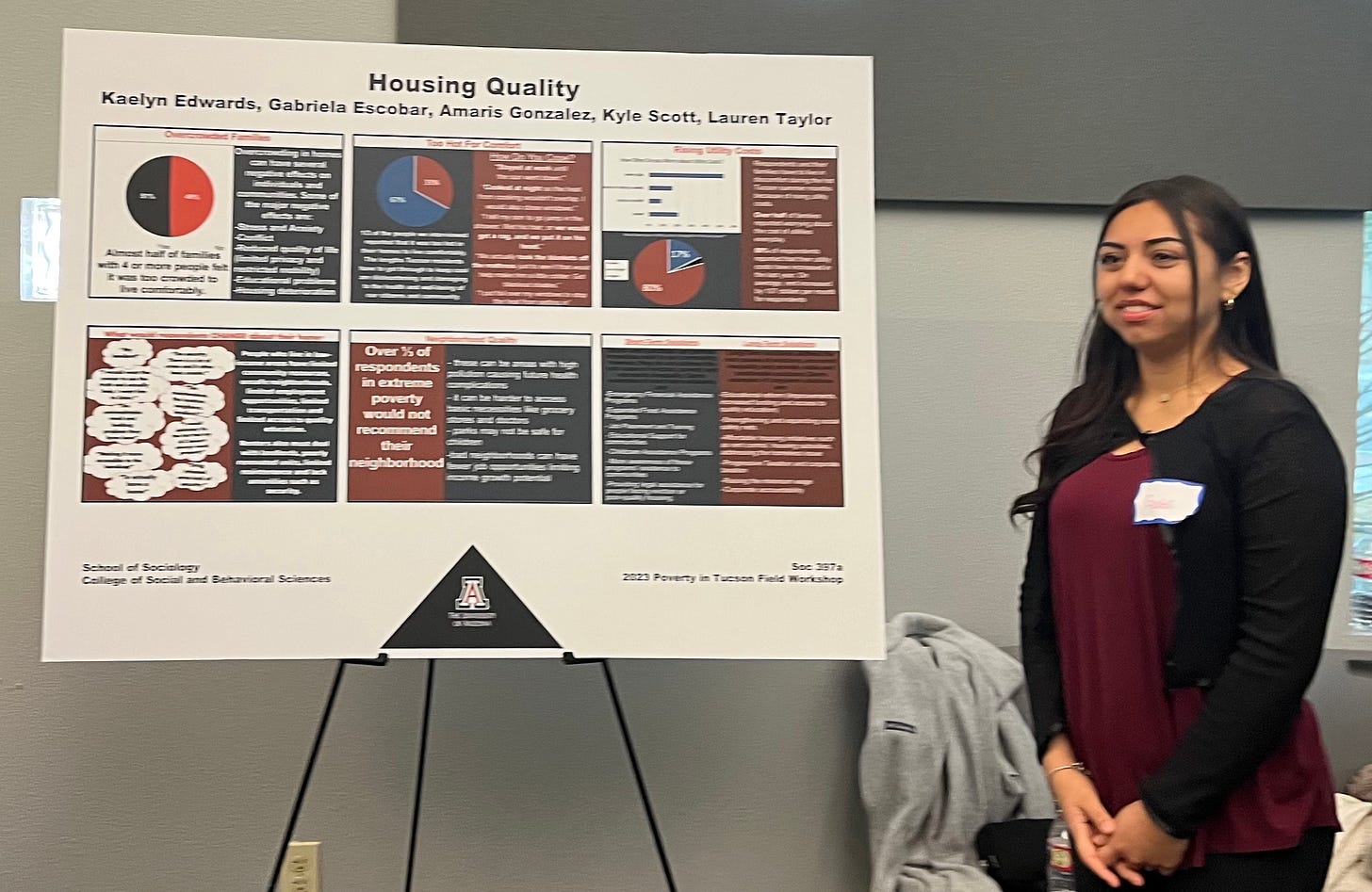
The 39 students interviewed 272 people as part of the workshop, which came at a critical time, according to Mayer.
“The work we’ve done this year has been hard. When we were starting to talk to folks it was October and ERAP had just ended,” Mayer said. “So, a lot of the data, a lot of stories that you see are ones of worry of what will come in the future.”
The upside is that about 75% of respondents said they would be able to pay their rent without assistance, Mayer said, but there are still systemic issues related to poverty that require more than short-term solutions.
Topics explored during the workshop included mental health, food insecurity, caregiving needs, job security, housing quality and more.
The survey included 90 questions and took around an hour for most people, although student Emily Smith spent four hours talking to one woman who had lost her job during the pandemic and was still struggling to get back on her feet.
Smith’s group focused their research on the reality that having a job doesn’t guarantee financial stability, with students learning about the benefits cliff, or the sudden and often unexpected decrease in public benefits that can happen with a small increase in earnings.
This means that many people who receive public benefits at work are unable to accept promotions or raises, as the loss of benefits would result in greater out-of-pocket costs than the increase in pay would cover.
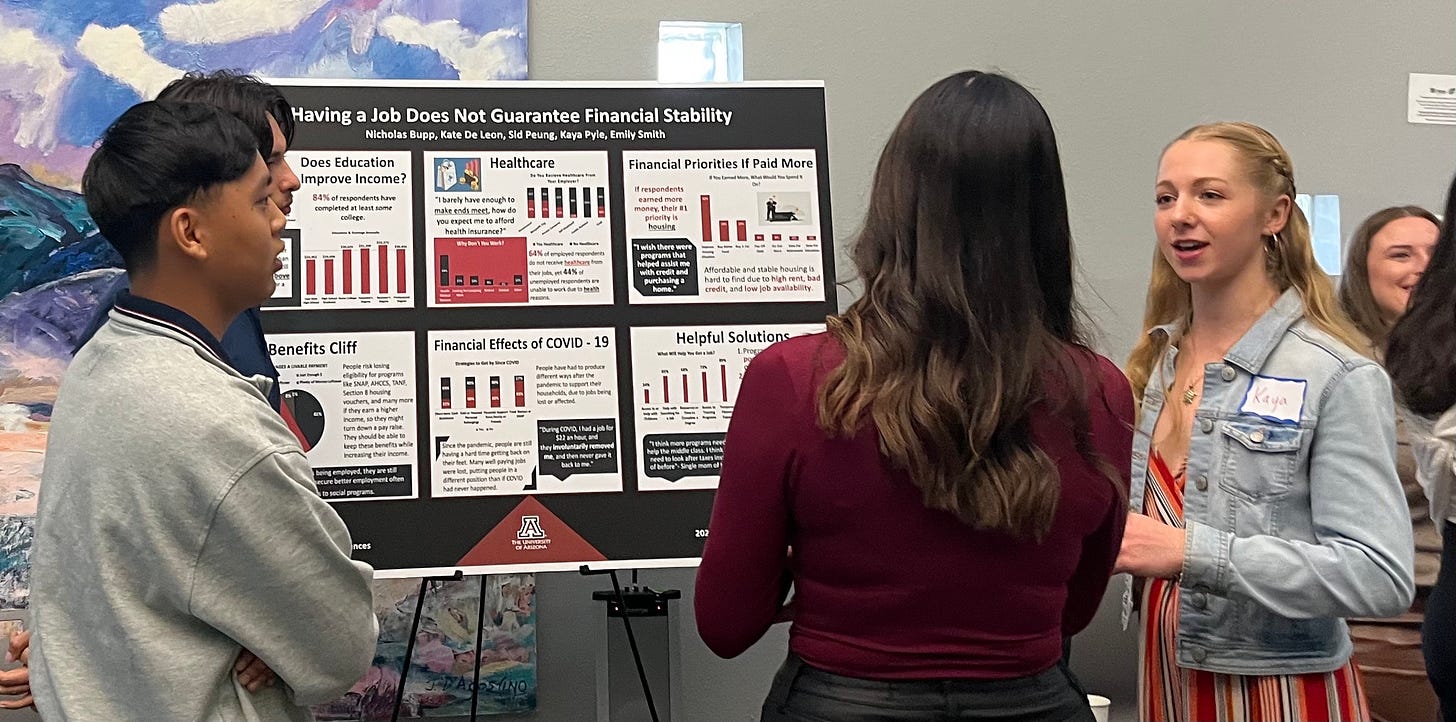
Group member Kate De León called the interview process “heartbreaking and rewarding at the same time.”
Student Gabriela Escobar, whose group focused on housing quality, said the beginning of the interviews was always scary.
“But you have to have strength to pull through,” she said. “They have so much to say.”
The group found that 80% of the people they surveyed saw an increase in their utility bills this year at an average cost of $107 per month. For many families living on the edge, the nearly $1,300 annual increase can be a dealbreaker, with more than half of the survey respondents saying they worry about the cost of their utilities every day.
Lauren Taylor, also in the housing quality group, said it was a wakeup call to speak to people living in such different and challenging circumstances who often lived just 10 minutes away from the UA campus.
“And they’re doing everything they can to make ends meet,” said Taylor, who plans to enter the Peace Corps after graduation before returning to school to study public health policy.
The group of students that focused on caregiving and poverty found that 44% of the people they spoke to were caregivers, and 92% of those caregivers were women.
Nearly half of the caregivers were unemployed, in large part because of the high cost of childcare, with 54% of the people who took the survey saying they spent more than 10% of their income on childcare.
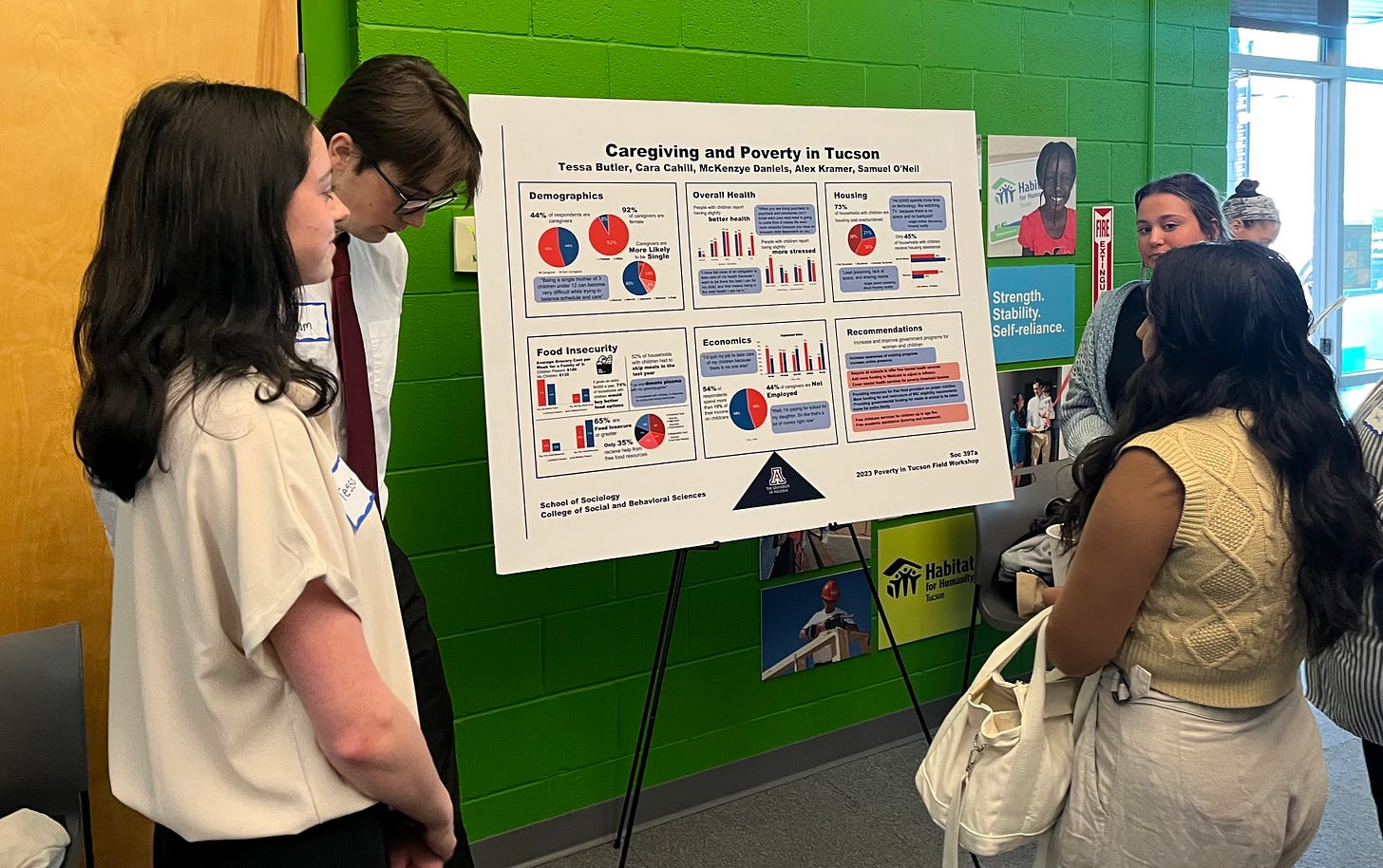
The group found that while many of the respondents had children who benefitted from school meal programs, caregivers themselves often went without meals. More than 50% of the people they surveyed reported skipping meals in the last year.
Group member Sam O’Neil said what surprised him the most in their research was the inconsistency in who was receiving services and benefits.
While 65% of the people they talked to said they were food insecure, only 35% were receiving help from free food resources.
O’Neil’s group recommended that more resources be offered through schools. Instead of just serving students breakfast and lunch, schools could send food home so that families don’t have to skip dinner.
The ability of schools to offer resources like academic assistance and mental health support for both students and their parents would also go a long way to improving the system, said O’Neil, who is studying pre-med with a minor in health disparities.
The students’ research will be shared with the county, city and local nonprofits to help create solutions and find ways to help community members in need.
And while short-term solutions are helpful, they’re also exactly what they claim to be and won’t be enough to solve an issue as big as poverty, said student Kyle Scott.
“We need long-term solutions,” he said. “And we need to break through the stereotypes about poverty and poor people and validate these issues.”
New rules: Arizona’s state universities will have to comply with new financial rules, the Arizona Daily Star’s Ellie Wolfe reports. The University of Arizona is in the midst of a financial crisis and administrators will present their plan to get out of it to the regents this week. Under the new rules announced by the Arizona Board of Regents on Tuesday, university finances will face more scrutiny from the regents, as well as a peer-review process involving all three state universities.
Regents meet today: The regents also announced they’ll hold a virtual meeting today at 5 p.m. to discuss UA President Robert C. Robbins’ plan to deal with the UA’s financial crisis, the Arizona Luminaria’s Carolina Cuellar reports. The regents didn’t include Robbin’s plan in the agenda. The public can watch a livestream of the meeting on the regents’ YouTube channel.
Groundwater falling: The Arizona Department of Water Resources released their first annual report on groundwater supply and demand, as required by a law passed last year. The results were not encouraging, particularly in areas with lots of agriculture. Groundwater levels declined in every large basin tested, with the Willcox basin seeing a dramatic decline, KJZZ’s Camryn Sanchez reports.
Authors incoming: The slate of authors speaking at the Tucson Festival of Books is taking shape, with more than 300 confirmed. The annual festival will be held March 9 and 10 on the UA campus and will soon start accepting applications for volunteers to help with nearly 2,000 opportunities during the two-day event. No experience is necessary and all volunteers will receive a free t-shirt.
Filling a need: Tucson’s first homeless medical respite center is almost ready to open its doors and help increase accessibility to health services for unhoused individuals and reduce strain on the city’s healthcare providers, the Daily Wildcat’s Nandini Manepalli writes. Catholic Community Services of Southern Arizona’s Casa de Respiro has been in the works for 2015 and is partnering with El Rio Health Center to make it happen. The 15,000-square-foot center will hold 36 beds for men, 10 beds for women and two private rooms for patients with individual needs, including hospice care.
Helping hands: Local officials are asking for volunteers to help with the point-in-time count of the homeless population on Jan. 24. Local jurisdictions must do the annual count if they want to receive federal funding to address homelessness, including $11.6 million for the Tucson area. The City of Tucson, the Tucson Pima Collaboration to End Homelessness, and the UA’s Southwest Institute for Research on Women conduct the count every year. Those interested in volunteering can register here.
14.9: The poverty rate in the Tucson area in 2022, according to the University of Arizona’s MAP dashboard.





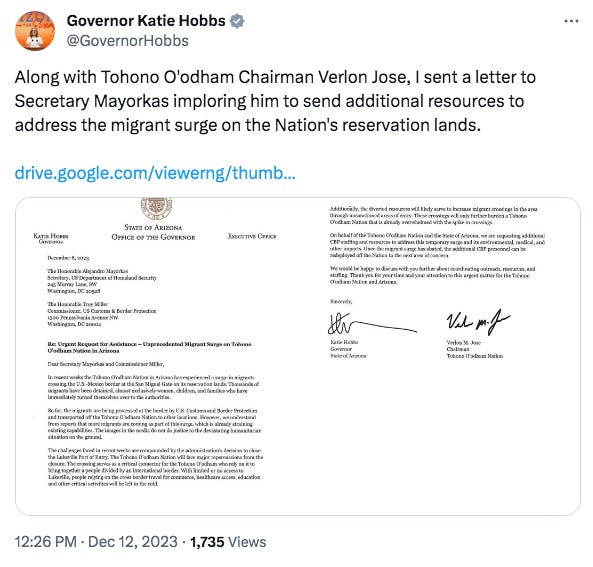
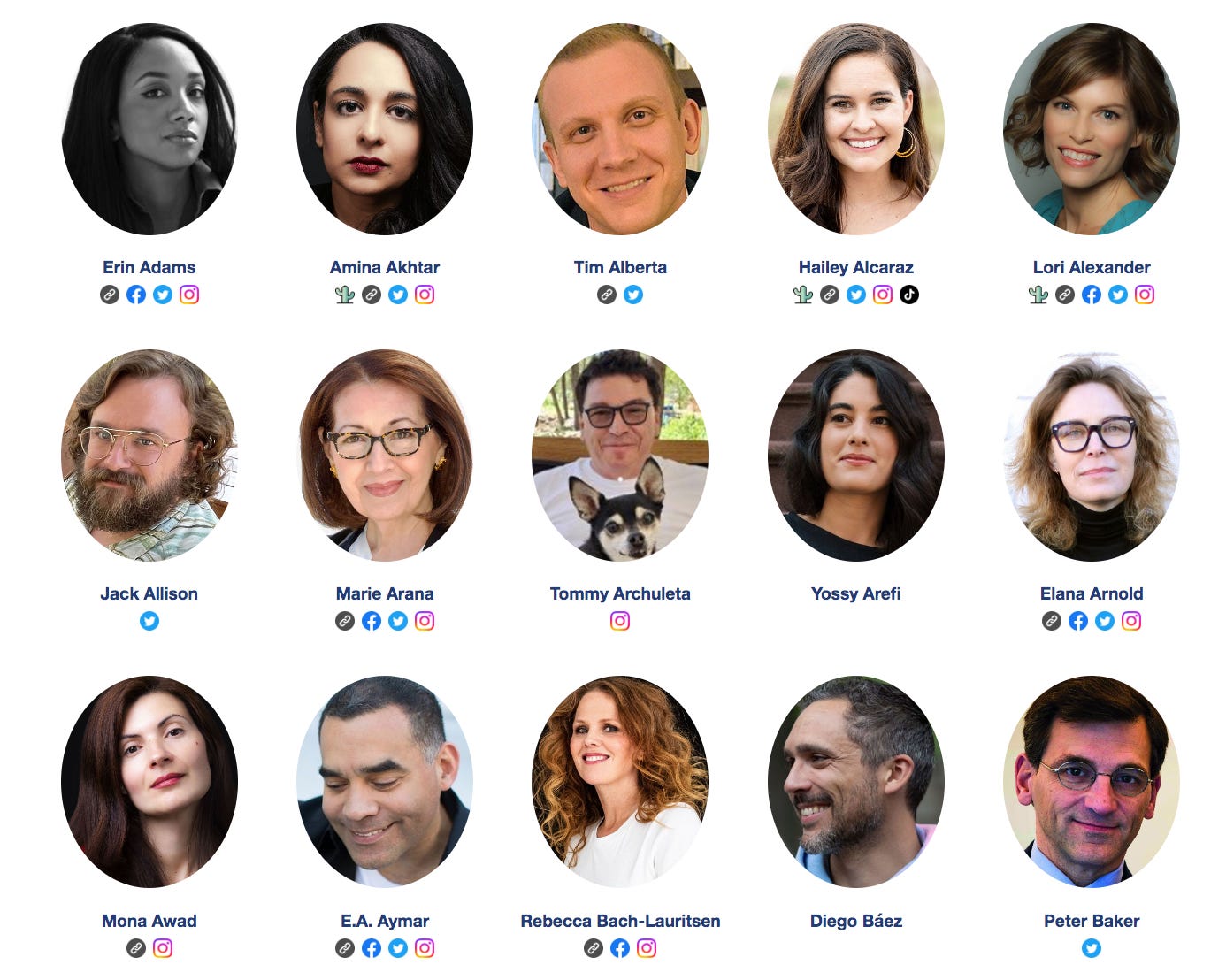

Thanks for the great write-up and photos of the student poverty survey. I have heard about it in the past but never saw it in the news. Also, did you know that TANF in AZ is based on 36% of the 1992 poverty rate? Only ~6% of people who live in extreme poverty AZ get TANF thanks to the Arizona Legislature. AZ government policies perpetuate chronic poverty. Tagging TANF to inflation and the current poverty rate would keep people housed.